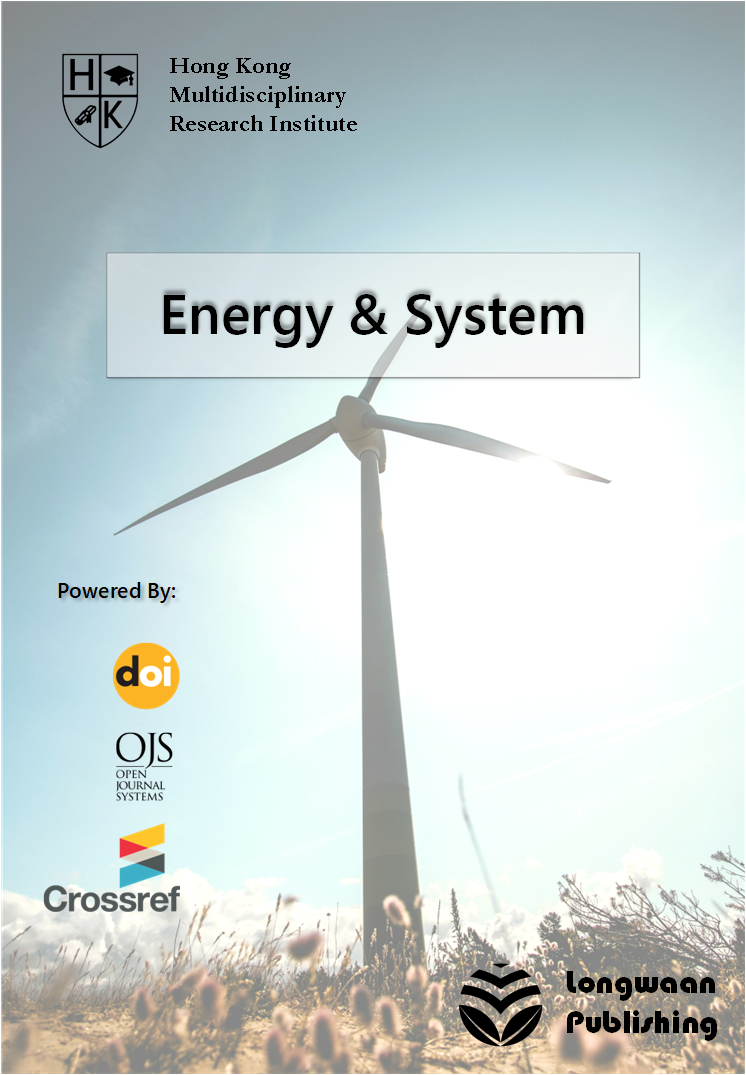Artificial Intelligence-Driven Optimization of Bifacial Solar Panel Performance in Complex Urban Environments
Published 2024-12-29
Keywords
- Artificial Intelligence,
- Bifacial Solar Panels,
- Urban Settings Efficiency Enhancement,
- Machine Learning,
- Geometric Modeling
How to Cite
Abstract
This study explores the optimization of bifacial solar panel performance in intricate urban landscapes through the application of artificial intelligence methodologies. Utilizing data from esteemed repositories such as the National Renewable Energy Laboratory (NREL) for irradiance, Weather Underground for meteorological conditions, and OpenStreetMap for urban topography, alongside performance metrics from solar panel manufacturers. The research methodology encompassed data preprocessing, the development of urban geometric models, and the implementation of a neural network for performance forecasting. The neural network demonstrated a notable accuracy of 0.92 and an F1-score of 0.90. Subsequent optimization via genetic algorithms pinpointed ideal orientations and inclinations, substantially augmenting the anticipated energy yield. Empirical validation through rigorous testing yielded a minimal Root Mean Square Error (RMSE) of 0.22 kW, affirming the precision of the proposed framework. This integrative AI-driven strategy offers a potent solution for enhancing the efficacy of bifacial photovoltaic installations in metropolitan contexts
References
- S. Srikanth, B. Nayak (2023). Reliability Performance Evaluation of Solar Inverter Considering Monofacial and Bifacial Solar Panels. 2023 2nd International Conference on Futuristic Technologies (INCOFT), 1-4. https://doi.org/10.1109/INCOFT60753.2023.10425561
- Govindasamy P et al. (2023). Electricity Generation of Dynamic Bifacial Solar Panels Using IoT. 2023 International Conference on Self Sustainable Artificial Intelligence Systems (ICSSAS), 1605-1610. https://doi.org/10.1109/ICSSAS57918.2023.10331709
- Jiang Yuan et al. (2022). A Digital Twin Approach for Modeling Electrical Characteristics of Bifacial Solar Panels. 2022 International Conference on Industrial IoT, Big Data and Supply Chain (IIoTBDSC), 317-321. https://doi.org/10.1109/iiotbdsc57192.2022.00065
- J. Reagan, S. Kurtz (2022). Vertical Bifacial Solar Panels as a Candidate for Solar Canal Design. 2022 IEEE 49th Photovoltaics Specialists Conference (PVSC), 0960-0960. https://doi.org/10.1109/pvsc48317.2022.9938769
- Lorenzo Becchi et al. (2024). Optical and electrical model for vertical-mounted bifacial solar panels. 2024 IEEE International Symposium on Systems Engineering (ISSE), 1-6. https://doi.org/10.1109/ISSE63315.2024.10741094
- Rayimjon Aliyev et al. (2024). Study on photovoltaic characteristics of bifacial solar panels. E3S Web of Conferences. https://doi.org/10.1051/e3sconf/202449701016
- Iman Kazemi Asfeh et al. (2024). Enhancing solar energy output for green hydrogen production: a comparative study on bifacial solar panels in Nepalese cities at household-scale. International Journal of Ambient Energy. https://doi.org/10.1080/01430750.2024.2424926
- M. H. Riaz et al. (2020). Optimization of PV Array Density for Fixed Tilt Bifacial Solar Panels for Efficient Agrivoltaic Systems. 2020 47th IEEE Photovoltaic Specialists Conference (PVSC), 1349-1352. https://doi.org/10.1109/PVSC45281.2020.9300670
- P. Babál et al. (2020). Uncertainties in irradiance measurements of sensors to POArear of bifacial solar panels. 2020 47th IEEE Photovoltaic Specialists Conference (PVSC), 0959-0963. https://doi.org/10.1109/PVSC45281.2020.9301008
- Rahul Arulkumaran et al. (2023). AI-Driven Optimization of Proof-of-Stake Blockchain Validators. Innovative Research Thoughts. https://doi.org/10.36676/irt.v9.i5.1490
- Kalyan Prasad Agrawal (2023). Organizational Sustainability of Generative AI-Driven Optimization Intelligence. Journal of Computer Information Systems. https://doi.org/10.1080/08874417.2023.2286540
- Uchenna Joseph Umoga et al. (2024). Exploring the potential of AI-driven optimization in enhancing network performance and efficiency. Magna Scientia Advanced Research and Reviews. https://doi.org/10.30574/msarr.2024.10.1.0028
- Janet Aderonke Olaboye et al. (2024). Integrative analysis of AI-driven optimization in HIV treatment regimens. Computer Science & IT Research Journal. https://doi.org/10.51594/csitrj.v5i6.1199
- Shereen Alfayoumi et al. (2023). AI-Driven Optimization Approach Based on Genetic Algorithm in Mass Customization Supplying and Manufacturing. International Journal of Advanced Computer Science and Applications. https://doi.org/10.14569/ijacsa.2023.01411106
- Hassan Anwar et al. (2023). Nourishing the Future: AI-Driven Optimization of Farm-to-Consumer Food Supply Chain for Enhanced Business Performance. Innovative Computing Review. https://doi.org/10.32350/icr.32.02
- Z. Luo, H. Yan, and X. Pan, ‘Optimizing Transformer Models for Resource-Constrained Environments: A Study on Model Compression Techniques’, Journal of Computational Methods in Engineering Applications, pp. 1–12, Nov. 2023, doi: 10.62836/jcmea.v3i1.030107.
- H. Yan and D. Shao, ‘Enhancing Transformer Training Efficiency with Dynamic Dropout’, Nov. 05, 2024, arXiv: arXiv:2411.03236. doi: 10.48550/arXiv.2411.03236.
- Y. Liu and J. Wang, ‘AI-Driven Health Advice: Evaluating the Potential of Large Language Models as Health Assistants’, Journal of Computational Methods in Engineering Applications, pp. 1–7, Nov. 2023, doi: 10.62836/jcmea.v3i1.030106.
- Muhammad Usman et al. (2023). AI-Driven Optimization of Ethanol-Powered Internal Combustion Engines in Alignment with Multiple SDGs: A Sustainable Energy Transition. Energy Conversion and Management: X. https://doi.org/10.1016/j.ecmx.2023.100438
- Haoran Li et al. (2024). AI-Driven Optimization System for Large-Scale Kubernetes Clusters: Enhancing Cloud Infrastructure Availability, Security, and Disaster Recovery. Journal of Artificial Intelligence General science (JAIGS) ISSN:3006-4023. https://doi.org/10.60087/jaigs.v2i1.244
- Pawan Kumar (2024). AI-Driven Optimization of V2G Systems for Electric School Buses. International Journal For Multidisciplinary Research. https://doi.org/10.36948/ijfmr.2024.v06i04.26440
- Xinfeng Wang et al. (2017). Peroxyacetyl nitrate measurements by thermal dissociation–chemical ionization mass spectrometry in an urban environment: performance and characterizations. Frontiers of Environmental Science & Engineering, 11, 1-8. https://doi.org/10.1007/s11783-017-0925-7
- Lei Guo et al. (2020). Characteristics Analysis of Raw Multi-GNSS Measurement from Xiaomi Mi 8 and Positioning Performance Improvement with L5/E5 Frequency in an Urban Environment. Remote. Sens., 12, 744. https://doi.org/10.3390/rs12040744
- Winfred Ingabire et al. (2020). Performance Evaluation of Propagation Models for LoRaWAN in an Urban Environment. 2020 International Conference on Electrical, Communication, and Computer Engineering (ICECCE), 1-6. https://doi.org/10.1109/ICECCE49384.2020.9179234
- Riccardo Longo et al. (2020). Impact of urban environment on Savonius wind turbine performance: A numerical perspective. Renewable Energy. https://doi.org/10.1016/j.renene.2020.03.101
- Hao Qin et al. (2020). Influence of site and tower types on urban natural ventilation performance in high-rise high-density urban environment. Building and Environment, 179, 106960. https://doi.org/10.1016/j.buildenv.2020.106960
- Pratiman Patel et al. (2019). Performance evaluation of WRF for extreme flood forecasts in a coastal urban environment. Atmospheric Research. https://doi.org/10.1016/J.ATMOSRES.2019.03.005

